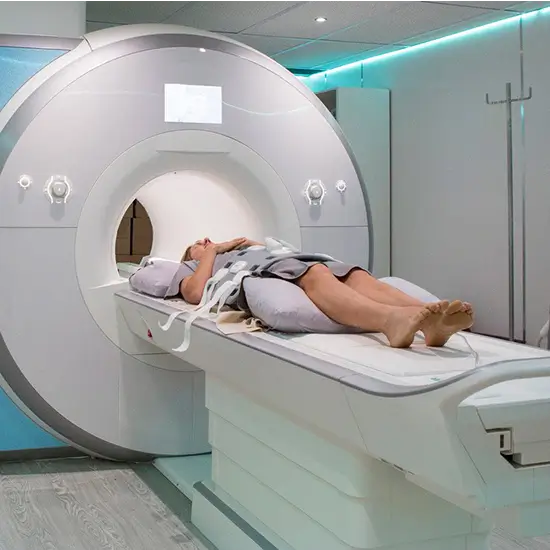MRI Whole Body MRI

Types of MRI Whole Body Scans
There are different approaches depending on what the physician is looking for:
Standard Whole Body MRI – General health screening covering major organs and systems
Oncological Whole Body MRI – Used for cancer detection, staging, and surveillance
Whole Body MRI with Contrast – Uses a contrast agent for clearer images of blood vessels, tumors, or inflammation
Whole Body MR Angiography – A specialized scan to visualize blood vessels and detect vascular diseases like aneurysms, blockages, or stenosis
What Are Some Common Uses of the Procedure?
MRI Whole Body scans are used in several diagnostic and preventive scenarios:
Early cancer detection and screening in high-risk individuals
Evaluation of unexplained fatigue, weight loss, or chronic pain
Monitoring known cancers for spread or recurrence
Diagnosing inflammatory or autoimmune disorders
Screening for bone marrow abnormalities
Assessing systemic infections or undiagnosed fevers
Whole-body checkups for executives or preventive health purposes
How Do I Prepare for My MRI Whole Body Scan?
Preparation is generally simple:
Wear loose, metal-free clothing or change into a gown provided at the clinic
Remove all metallic items (jewelry, watches, belts, etc.)
Inform the technician if you have any implants, pacemakers, or metal inside your body
If a contrast-enhanced scan is required, you may need to fast for a few hours
Let the technician know if you are claustrophobic, pregnant, or breastfeeding
What Will Happen During My MRI Whole Body Scan?
During the scan:
You’ll lie on a cushioned table that slides into the MRI machine
The scan is painless but requires you to lie still for 45–90 minutes
You may hear loud knocking sounds—earplugs or headphones are provided
In contrast scans, a contrast dye may be injected through an IV
Our technician will monitor you throughout and communicate as needed
After the scan, you can resume your normal activities. The images are reviewed by a radiologist, and a detailed report is shared with your referring doctor.
What Are the Reasons for a Whole Body MRI?
Your doctor may recommend a Whole Body MRI for:
Early cancer screening, especially in high-risk individuals (e.g., family history)
Evaluating symptoms affecting multiple parts of the body
Monitoring patients with known cancers or chronic diseases
Detecting hidden infections, blood disorders, or musculoskeletal conditions
Comprehensive health checkups for executives or individuals 40+
Preventive screening in people with a genetic predisposition to cancer or systemic illness
Why is Angiography Used in MRI?
MR Angiography (MRA) is a special MRI technique used to visualize blood vessels in detail. It is commonly used to:
Detect aneurysms, stenosis, or blockages in arteries and veins
Assess blood supply to tumors or organs
Evaluate vascular malformations or congenital abnormalities
Plan surgeries or interventional procedures
Monitor known vascular conditions without the risks of traditional angiography
MRA is non-invasive and often performed without contrast, although a contrast-enhanced version may be used for greater detail.
